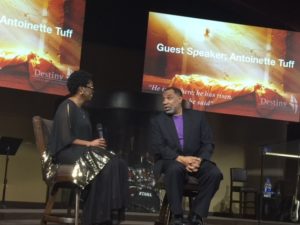
Many religious organizations and churches refer to their central meeting place in their house of worship as their sanctuary which is also defined as a place of refuge and protection. It is ironic how these places of worship have become soft targets for violence rather than a “sanctuary” for worship. Recent headlines from California to Pennsylvania and even in New Zeland, show how places of worship have become an increased target for armed-shooters where many have lost their lives or been injured. Armed shooters may perceive houses of worship as attractive targets where they can inflict mass casualties, cause substantial psychological impacts, and draw extensive media coverage.
The best way to address violence is to be prepared. I have spoken at many churches on the importance of Tuff Tactics, compassion, confidence and control. Additional steps can also be taken and outlined below.
How to Make Your Place of Worship Less Vulnerable
- If you don’t already have one, create a Safety and Security Team. Designate a point person on security issues to be the security director and define the responsibilities of that position.
- Conduct a security assessment to identify your house of worships’ vulnerabilities. Ideally, the assessment would be conducted in conjunction with your local law enforcement agency.
- Develop a security plan with defined roles for all staff, including greeters, ushers and other frontline workers and volunteers.
- Within your security plan, include a seating location for all security personnel, lockdown procedures, crisis communications and an evacuation plan.
- If appropriate for the size of your organization, have walkie-talkies, pagers and/or radios on hand so that you may effectively communicate any issues or concerns.
- Establish a no-tolerance policy for fights, altercations, and other disruptions.
- Work with local law enforcement to provide training for staff and volunteers on topics such as dealing with disruptive individuals and identifying and diffusing potentially violent situations.
- Understand the rules and limitations of a concealed carry weapons permit (CCW) and what your rights as a church are in allowing a member or visitor to bring their firearm to your house of worship.
How to Make Your Members Less Vulnerable
- Never allow staff to work alone. Always ensure that there are at least two employees present at all times.
- Establish an internal distress code that will alert others in the office to your need for assistance. For example, if your members typically address each other by first name, your distress code could be addressing a colleague by his/her last name (i.e., “Ms. Smith”).
- Keep all doors locked except when in use and limit access points as much as possible.
- Make sure all staff members know of and understand the organization’s security plan.
Source: https://www.ministrymatters.com/all/entry/8520/churches-and-gun-violence-7-practical-preparation-tips and https://www.fema.gov/faith-resources




